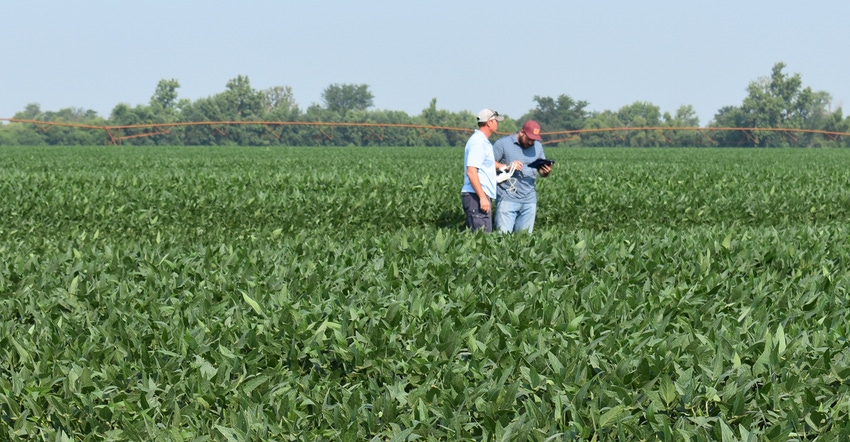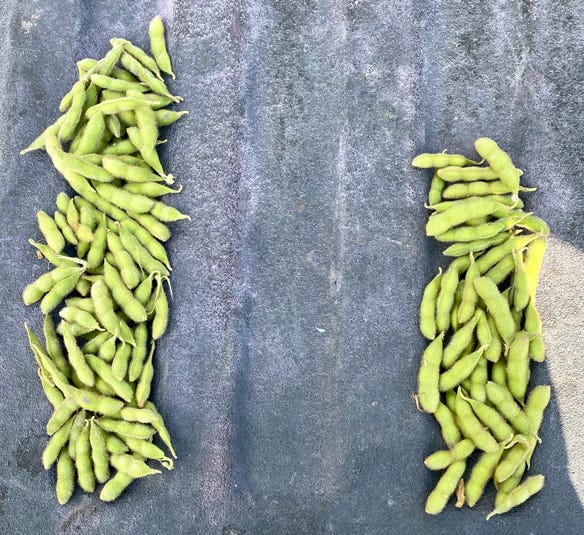
Marc Kaiser is keeping one crop production practice the same for 2022 — applying ammonium sulfate to his soybeans.
Farmers typically consider ammonium sulfate a corn input, providing 21 pounds of nitrogen and 24 pounds of sulfur.
“It's always been known that corn needs nitrogen and sulfur,” Kaiser explains, “so it's been great. The problem over the years is people are afraid to put any nitrogen on soybeans because they get too tall and become a headache to harvest.”
However, after two years of on-farm testing, the Missouri farmer found that putting nitrogen and sulfur in the right place at the right time brings about yield and profitability — to the tune of $80 per acre.
Build a market
AdvanSix has been in the nitrogen fertilizer business along the East Coast since the late 1920s. Over the years, the company transitioned to producing ammonium sulfate.
Mike Hamilton, vice president of business and director for plant nutrients with AdvanSix, says the company has a long-term business focus around promoting the benefits of sulfur nutrition, typically in crops that need both nitrogen and sulfur, such as corn. However, in the past five years, its efforts shifted to soybeans.
At first, Hamilton says, the company looked to ammonium sulfate as a rescue application on soybeans. Researchers at Purdue University used the product on a soybean crop that flooded. “They found that ammonium sulfate offered the most response to the soybean plant,” he notes. “I think it was a bit of surprise to them.”
The company decided to put feet to their ammonium sulfate product Sulf-N, and look at on-farm application through its Supplement Your Soybeans program.
Make money
Kaiser is one of the six participants from across the country to have test plots on their farms to determine any yield advantage using ammonium sulfate on soybeans. Last year, he recorded the largest bump in yield for farmers in the program.
His soybeans, with the 100 pounds of ammonium sulfate, yielded 89.6 bushels-per-acre average over about 15 acres. Kaiser had another 15 acres with half the rate, and they yielded 87.1 bushels per acre. The rest of the 80 acres in that field without ammonium sulfate yielded 81.46 bushels per acre.
“The bottom line was with 100 pounds of ammonium sulfate in our strips, it had an extra 8.1 bushels to the acre,” Kaiser says.
Using a contracted soybean price at $15 per bushel, that is about $120-per-acre gross profit. Then take off the cost of ammonium sulfate, which is about $40 per acre, Kaiser notes. "So it's still an $80 profit margin, net profit outside of time putting on the product.”
Continue trials
Kaiser’s soybean crop in Carroll County went in the ground in late April 2021. By mid-May, he applied ammonium sulfate at V3 on soybeans. Then came a 13-inch rain event in mid-June.
While crop scouting over the summer, he saw soybean plants at varying heights, concluding that some plants took up a portion of the nitrogen before the heavy rain event. However, the plants did not grow too tall.
“Did it take up the ammonium sulfate to its full benefit?” Kaiser asks. “Did some of the nitrogen wash away allowing our plants to not get overly tall or fall over?”

At Kaiser Farms, 110 pounds of ammonium sulfate at R1 produced 79 pods (left) at R5, versus untreated (right) at 51 pods.
These are the unknowns and why he is going to continue in the Supplement Your Soybeans on-farm trials with AdvanSix this growing season.
Kaiser plans to continue using tissue samples to document the progression of the nitrogen and sulfur uptake by the plants. He wants to investigate whether the ammonium sulfate is a benefit in large rain events by protecting and perhaps increasing yield.
For Hamilton, this is the type of investigation he wants from farmers. “Test ammonium sulfate on your soybeans,” he says. “See if it works for you.”
While the company has its own brand of ammonium sulfate, Hamilton says at the end of the day, if farmers can see that ammonium sulfate has good nutritional benefits and provides a good return on investment for growers, it will be a benefit to all of agriculture and the entire ammonium sulfate business.
About the Author(s)
You May Also Like






